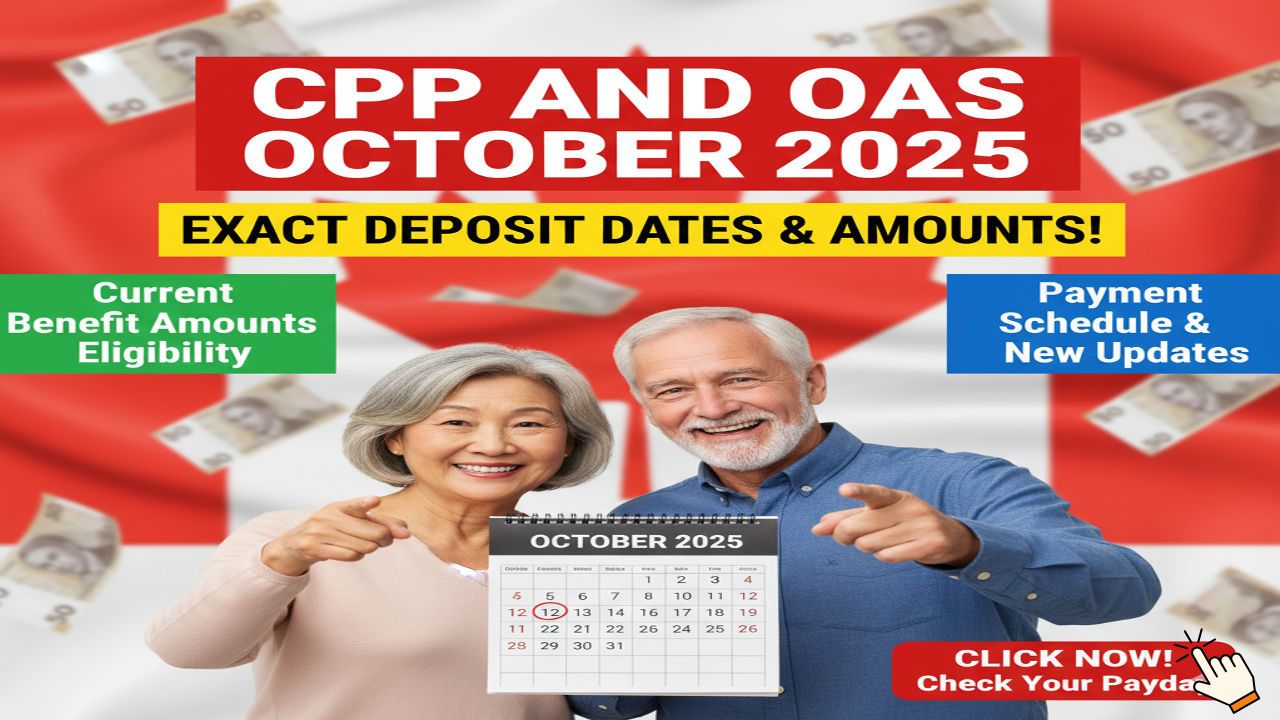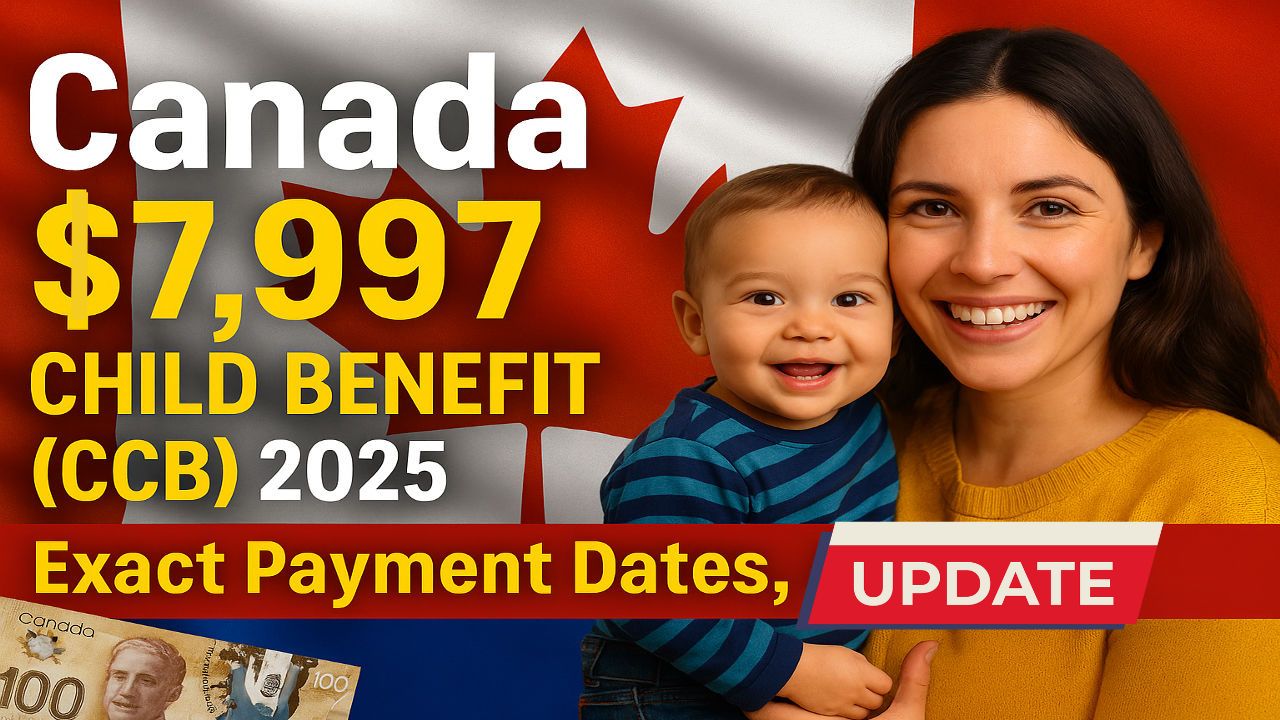Canada has signed more than 60 bilateral Social Security Agreements with other countries. These treaties coordinate pension programs so people who have lived or worked in both Canada and a partner country can:
- Totalize (combine) periods of contributions or residence to meet minimum eligibility thresholds.
- Avoid double coverage while posted abroad for work.
- Receive benefits while living outside Canada, often via direct deposit in local currency.
The program is administered by Service Canada in coordination with the CRA and Employment and Social Development Canada (ESDC). Partner countries include, among others, the United States, United Kingdom, India, France, Germany, Japan, Mexico, Netherlands, and New Zealand.
CRA Social Security Agreement 2025 Quick Summary
Topic |
Details |
|---|---|
What it is |
Bilateral Social Security Agreements that coordinate pensions between Canada and 60+ partner countries |
Canadian benefits covered |
Canada Pension Plan (CPP) retirement, disability, survivor and children’s benefits; Old Age Security (OAS); in limited cases Allowance/Allowance for the Survivor |
Core purpose |
Let you combine insurance/coverage periods in both countries to qualify and receive payments abroad (totalization) |
Who can use it |
People who have lived or worked in both Canada and a partner country, or who now reside outside Canada but have Canadian entitlements |
Where it pays |
CPP pays worldwide; OAS pays abroad if you meet residency rules or qualify via an agreement |
Pay cadence |
Same monthly deposit schedule as if you lived in Canada (CPP/OAS standard dates) |
Currency & method |
Direct deposit in the local currency where available; otherwise paid by cheque or in CAD depending on country |
Taxes |
Generally taxable; non-residents receive NR4 tax slips; withholding and treaty rules may apply |
Official site |
https://www.canada.ca (Service Canada – International Social Security Agreements) |
How totalization works (in plain language)
Many pension systems require a minimum number of contribution or residence years. If you have some Canadian CPP contributions and some periods under another country’s system, the agreement lets authorities add them together to help you qualify in either country. Each country remains responsible for paying the portion that corresponds to its own rules and your credited periods there. You may receive two separate pensions one from Canada and one from the partner country.
Which Canadian benefits can be paid abroad?
1) Canada Pension Plan (CPP)
- CPP Retirement: Payable worldwide, even if you move to a non-agreement country. Amount depends on your contributory record.
- CPP Disability: Payable abroad if you meet eligibility (severe and prolonged disability plus contribution requirements).
- CPP Survivor/Children’s Benefits: Payable to eligible survivors and dependent children, including outside Canada, subject to the rules.
2) Old Age Security (OAS)
- OAS Pension: Payable outside Canada if you have at least 20 years of Canadian residence after age 18, or you qualify through an agreement that allows you to meet residence conditions using totalized periods.
- Guaranteed Income Supplement (GIS) and Allowances: Generally not payable outside Canada, except for very short absences. These are needs-tested, residence-based benefits aimed at seniors living in Canada.
Key idea: CPP is contribution-based and portable worldwide. OAS is residence-based and portable if you meet the 20-year rule or an agreement makes you eligible.
Eligibility highlights
You may qualify to receive Canadian pensions abroad if you:
- Have valid CPP contributions and/or Canadian residence periods for OAS.
- Lived or worked in a partner country whose agreement with Canada lets you totalize periods to meet minimums.
- Meet age thresholds (CPP retirement can start as early as 60 with actuarial reduction; OAS generally from age 65 unless you defer for an increase).
- Satisfy all documentary proof requirements (identity, residence, contributions).
If you are a foreign national living in Canada, the agreement can also help you qualify for that country’s pension later by combining your Canadian and foreign periods without losing your Canadian rights.
How payments are made outside Canada
- Frequency: Monthly, on the same CPP/OAS deposit calendar used in Canada.
- Method: Direct deposit is available in many countries and often paid in local currency. Where direct deposit is not available, payments may be issued by cheque or deposited in a Canadian account.
- Exchange rates: When paid in local currency, conversion is handled by the Government of Canada’s payment agent at prevailing rates; banks may apply fees on receipt.
- Security: Keep your banking details and address current with Service Canada to avoid holds or returned payments.
Taxes and reporting for non-residents
- Taxability: CPP and OAS are taxable income. If you are a non-resident, Canada may withhold non-resident tax at source.
- Tax slips: You will receive an NR4 slip showing gross income and non-resident tax withheld.
- Treaties: Canada’s tax treaties may reduce withholding. You can apply to adjust the rate if a treaty applies. You may also have to report the income in your country of residence.
Step-by-step: How to receive Canadian pension abroad
Step 1 Confirm your destination country’s status
Check whether your new country of residence has a Social Security Agreement with Canada. If yes, review that country’s summary page to see how periods are totalized and which benefits are portable.
Step 2 Review benefit-specific rules
- CPP: Usually payable worldwide.
- OAS: Ensure you have 20+ years of Canadian residence post-18, or verify whether the agreement allows you to meet OAS residency via totalization.
Step 3 Gather documents
- Proof of identity (passport, birth certificate), SIN.
- Proof of residence history in Canada (leases, tax slips, immigration records).
- Proof of foreign coverage/contributions (if applying via a partner country).
- Bank details for direct deposit (local account info if available).
- If applicable: medical reports (CPP Disability), death/marriage certificates (survivor benefits).
Step 4 Complete the correct application
- Use the Service Canada forms for CPP and/or OAS outside Canada.
- If applying from abroad, you can often file through the foreign agency or submit directly to Service Canada – International Operations.
- Include any country-specific agreement forms if instructed.
Step 5 Submit and track
- Mail to: International Operations, Service Canada, Ottawa ON K1A 0L4, Canada.
- Keep copies. Processing times vary; you may be contacted for more information.
- Once approved, you will receive an award letter stating your monthly amount, start date, and payment method.
Step 6 Keep records current
- Report address changes, banking changes, marital status changes, or work activity if it could affect your benefit.
- Review non-resident tax settings and local obligations annually.
Common scenarios and answers
I have only 12 years of residence in Canada but decades in a partner country. Can I get OAS abroad?
Possibly. If the agreement allows totalization of residence or equivalent coverage, you may meet OAS export rules. You could receive a pro-rated OAS based on Canadian residence.
Can I receive both a Canadian pension and a foreign pension?
Yes. With agreements, you can often receive both, each pro-rated to your credited periods.
What if I move to a non-agreement country?
CPP remains payable worldwide. OAS may still be payable if you already meet the 20-year residence rule without totalization. If you do not, you may not receive OAS long-term in that country.
Will my payments stop if I return to Canada?
No. If you return and re-establish residence, you can continue CPP and may regain GIS/Allowance if you meet residence and income conditions.
Practical tips to avoid delays
- Apply early: If you are nearing 65 (OAS) or your planned CPP start, file several months in advance.
- Be precise: Names, dates, and ID numbers must match across Canadian and foreign records.
- Use direct deposit: It reduces delays, currency issues, and lost cheques.
- Mind tax: Confirm non-resident withholding and local tax requirements to avoid surprises.
- Keep documentation: Residence proofs, contribution records, award letters, and tax slips should be stored securely.
FAQs
1) Do I have to live in a partner country to use an agreement?
No. Agreements can help even if you no longer live there, by recognizing past coverage to qualify and by enabling payment abroad.
2) Can my spouse or children receive survivor/children’s benefits abroad?
Yes, if eligibility criteria are met. CPP survivor and children’s benefits are generally payable outside Canada. OAS survivor-related allowances have strict residence rules.
3) What happens to GIS when I leave Canada?
GIS is intended for residents living in Canada and usually cannot be paid if you are outside Canada beyond a short absence.
4) Will exchange rates affect my amount?
If paid in local currency, amounts reflect the prevailing exchange at payment time. Your bank may charge fees.
5) How long does processing take?
Timelines vary by benefit and country. Build in several months before your planned start date, especially when totalization or foreign records must be verified.
Conclusion
The CRA Social Security Agreement framework makes it possible to retire abroad without forfeiting your Canadian pension rights. With CPP payable worldwide and OAS exportable when you meet the 20-year rule or qualify via an agreement, you can build a retirement in the country of your choice. The key is to totalize coverage, file the right forms, set up direct deposit, and stay on top of tax and address updates. For detailed, country-specific rules and application kits, start at the official Government of Canada site above.
For More Information Click HERE















